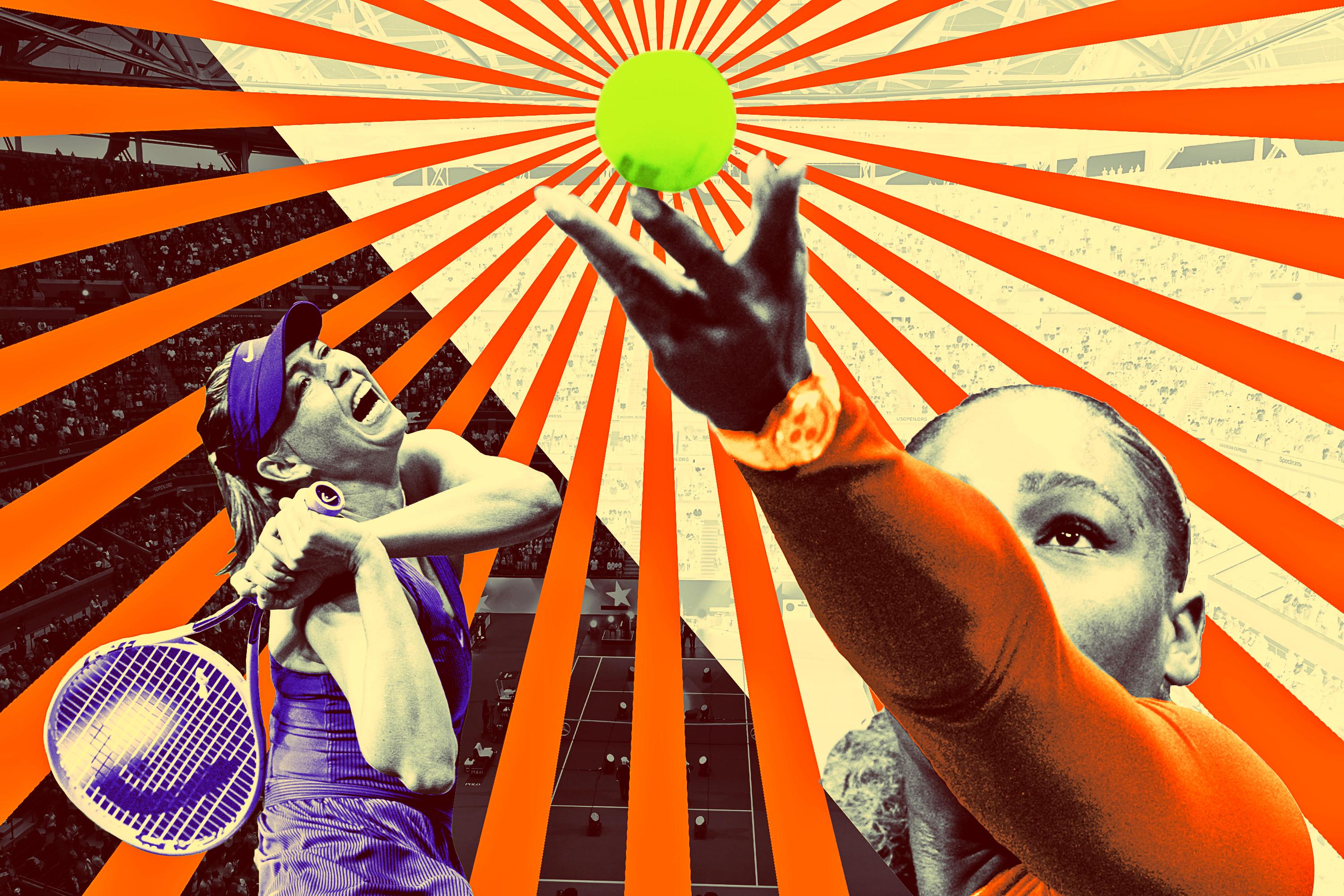
First, a confession: Until this week, if someone had sidled up to me and remarked on the rich history of U.S. Open matches between Maria Sharapova and Serena Williams, I totally would have nodded and agreed with them, and I totally would have been wrong. It would be just like all those other well-meaning but false memories and Mandela Effect beliefs that persist in the wild to this day, like that there was a ’90s film called Shazaam! starring Sinbad (it’s actually Kazaam, starring Shaq) or that the little Monopoly man has a monocle. (That’s Mr. Peanut.)
In all these examples, something about the manufactured memories just feels right. In this case: Name a more fitting twosome to have routinely faced off under the Arthur Ashe lights on a late summer evening in Flushing in front of some loving, rude fans than Williams, a woman with an HBO docuseries and some four-figure sneakers, and Sharapova, a woman with a candy line and a degree from Nick Bollettieri’s Florida tennis academy.
Instead, Sharapova and Williams went into Monday’s opening-night match having somehow never met one another in the U.S. Open before. And of course, now that they actually have played a brisk, sub-hour 6-1, 6-1 Williams win of match, it still feels like they’ve barely collided at all.
Sharapova was ranked 87th in the world when she walked on the court, which helped explain why she was eligible to be playing Williams so early in the tournament. First-round Grand Slam matches are typically brief, boring affairs between a known entity and—I say this with all due respect to people who could kill me slowly with nothing but grip tape and a smile—some tennis rando. So it was clear that this year, the U.S. Open organizers sought to take advantage of the unusually marquee early matchup by squeezing it for all it was worth.
Alec Baldwin, Mike Tyson, Vera Wang, and Regina King were all there! The ESPN broadcast featured a multisong pre-match musical performance by a Broadway guy in red pleated slacks and well-pomaded hair! When someone on the TV said, with gravitas: “It’s an opening night unlike any in the long history of this tournament!” I failed to catch who it was because I was too busy writing down “sounds like Trump!” Williams walked onto the court wearing what looked like a silk boxing robe! After the first two games of the match, the score was tied at 1-1! What a night!
Sharapova and Williams have met 22 times in their careers, and Williams has won all but two. All but two! Perhaps the reason why I remember their history being more balanced is because when Sharapova did win, it was a doozy: a 2004 shocker over Williams at Wimbledon, 6-1, 6-4, when Sharapova was only 17, a memorable stage entrance indeed. The rest of her career performance never quite hit those same highs in the end.
Or perhaps it’s because, off the court, the two players really did have an icy relationship: As recently as 2015, Sharapova was making as much as seven figures more in endorsements than Williams was, a fact said to irk the Williams camp. And in her 2017 memoir, Sharapova dished about locker room drama and explained that it wasn’t just her 2004 Wimbledon win that made Williams resent her so: It was that, after the match, Sharapova had witnessed Williams break down and cry.
But that was all a long time ago, a decade and a half, and it sure felt like it at the U.S. Open on Monday. It was occasionally funny but mostly kind of bleak to hear what the ESPN announcers had to say about Sharapova, now 32, who had to sit out from tennis for over a year starting in 2016 when she tested positive for banned substances. John McEnroe said maybe she could “resurrect a career that seems to be going down the tubes.” In a tone dangerously close to “you love to see it,” someone said: “You gotta admire that she’s still playing.” Sharapova was described by Chris Evert as “not a natural athlete,” and it was supposed to be a compliment. “She’s still jumping up and down, she’s still eager, she’s a fighter!” was how things were framed after Williams won the first set. TV cameras zoomed in on her mostly empty box in the stands, a marked contrast to Serena’s contingent. (Shouts to Alexis Ohanian’s D.A.R.E. shirt, by the way. Old millennials know.)
Williams did the best thing she could under the circumstances: nothing drastic. Last time she appeared on this court at the U.S. Open, it was in 2018’s disastrous championship defeat to Naomi Osaka, one which ended with boos and tears and umpire complaints and was memorable enough to still have legs in the news cycle as recently as this summer. On Monday, she began the process of overriding that memory, coolly and professionally dispatching Sharapova as if she were any ole first-round opponent of tournaments past.
When it was over, Williams had to remind the crowd that there is a whole lot of tennis left to play, that this was only night one. “I’m excited!” she said. “This is gonna be fun!” But while it may only be the beginning of the perennially wildest tournament on the tennis calendar, Monday night’s match also felt like the end of something: Namely, it marked the last time I’ll ever mistakenly remember that Serena and Sharapova were once equals.

